Hello, it’s Conservario here.
Many people think that playing ukulele = playing chords, and chords are directly related to playing.
C chord ♫Janjanjanjan ♫G7 chord ♫Janjanjan ♫ Chords are very useful because it’s the only way to make music.
Some are easy to press and some are difficult.
In this article, we will take a deeper look at the C chord, a chord that every ukulele player has played before.
As the title says, the chord can be changed in any form.
I will explain further as clearly as possible.
Let’s take a little bit of time to talk about music theory.
I understand that some people are a bit nervous when they hear the words “music theory,” but please rest assured that I will try to explain it in as simple a language as possible.
The important thing to remember is that when learning theory, be sure to try playing it out on your instrument as you’re reading about it.
If you read the theory in a casual manner, you will only feel like you understand it, but you will not actually learn anything.
The parts that I want you to play will be described in each section, so please enjoy reading while playing the notes.
Let's play the C chord.
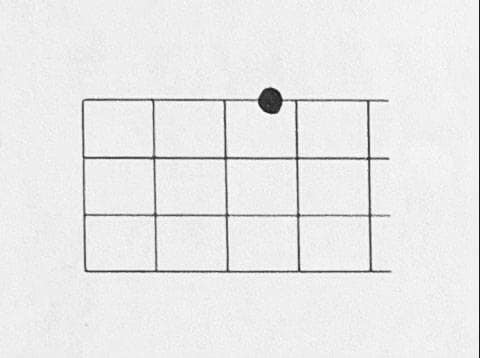
If you press the third fret of the first string with your ring finger, you will have a C chord.
Play it once to see how it sounds.
This form of C is the easiest and most well-known chord.
It may be too easy for those who read columns like this and practice hard all the time.
Now, here is where to dig deeper.
Can you answer what notes ring out in order from the 4th string to the 1st string?
...... Some of you may have trouble when suddenly asked.
Don't panic and think back to when you are practicing.
When you practice, you probably tune up this string first (I know you do!).
Starting with the 4th string, tune to G, C, E, and A in that order.
For the C chord, only the third finger on the first string is held down.
In other words, the 4th string is G, the 3rd string is C, and the 2nd string is E, just like in regular tuning.
Only the last note of the first string is different.
What do you think the note on the first string is?
The correct answer is C.
If you write down all the notes playing out when you hold down the C chord, it will look like this.
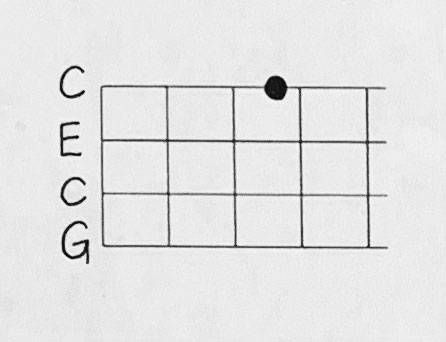
That's why we always play G, C, E, C from the 4th string, which is your regular C chord.
Did you notice anything in this answer?
If you noticed that the C on the 3rd string and the C on the 1st string are the same C, that's great! Well, technically it's a low C and a high C because the octaves are different, but they are essentially the same.
You might think that just because you are playing four strings, you are playing four different notes, but in fact, you play three different notes (C, E, and G) to make the C chord.
Now you know that the C chord is made up of C, E, and G. This means that you play C, E, and G.
This means that as long as the notes C, E, and G are played, the chord C is formed no matter how you play it.
It doesn't matter if the order is switched around.
EGC, GCE, GEC, etc. are all the same chord.
Try playing the chord in the image below.
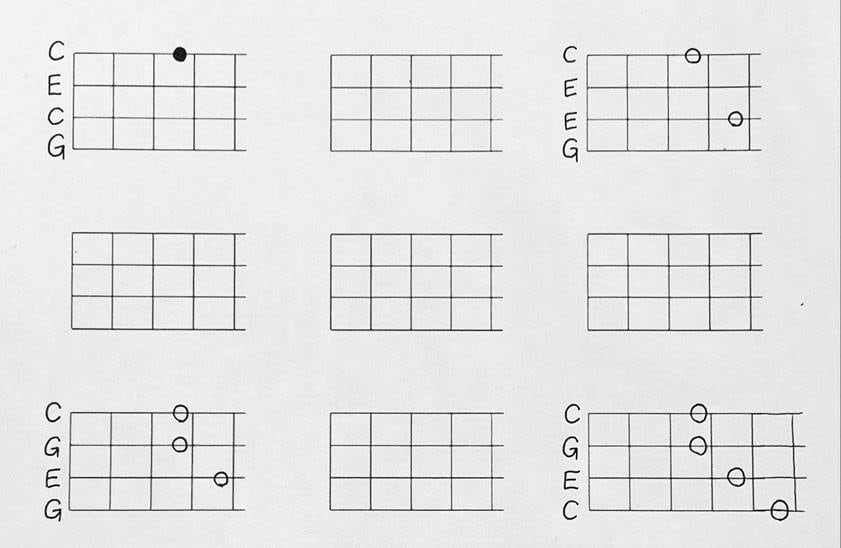
Some of the ways to play are not very practical, but these are all C chords.
If you are a solo ukulele player and have sheet music, take a look at any of these songs.
It probably has the chord written on top of the tablature.
Have you ever wondered why C is held like this?
That may not be the usual way to hold the chord, but the note that is played is CEG, so the chord is C after all.
Similarly, other chords are the same if the notes played are the same, even if the way they are played is different.
If I were to show you all the ways to play all the chords, my life would be over, so I'm only showing you the C chord.
Please remember that a chord is the same chord if the notes within the are the same, and that there are many different forms of chords.
To summarize
I hope I have conveyed to you that it is okay to change the root of the chord.
I apologize if there are some parts that are difficult to understand.
If you look at chord books on the market, you will find a huge number of chords.
There are even some that will make you say, “When do you use this kind of chord? ......”.
It is not necessary to memorize all of them, but it might be useful to know what note you are playing now.
Once you have that, you can make your own chords.
If you know how to make both major and minor chords, you will be able to hold your first chord.
There is some sheet music that carefully describes chords with diagrams and tablature, but most of the sheet music in the world is not written that kindly.
If you can play chords even if they are not written, you have graduated the beginner stage.
If you are interested, I recommend you to learn how to make chords and study some basic music theory.
Thank you for reading to the end.
The “sound & person” column is made up of contributions from you.
For details about contributing, click here.











![[Enjoy the Ukulele Even More!] Who Is Suited for the Ukulele?](/contents/uploads/thumbs/5/2022/4/20220419_5_17569_1.jpg)
![[Guitar Guide] How to Connect Arpeggios Smoothly](/contents/uploads/thumbs/5/2022/4/20220419_5_17565_1.jpg)
![[Enjoy the Ukulele Even More!] Let’s play “Aloha ‘Oe”](/contents/uploads/thumbs/5/2022/4/20220419_5_17558_1.jpg)
![[Enjoy the Ukulele Even More!] Bad habits that Often Happen in Beginner to Intermediate Ukulele Players](/contents/uploads/thumbs/5/2022/4/20220418_5_17527_1.jpg)
![[Enjoy the Ukulele Even More!] Playing, Extending, and Stopping the Sound](/contents/uploads/thumbs/5/2022/2/20220218_5_16781_1.jpg)
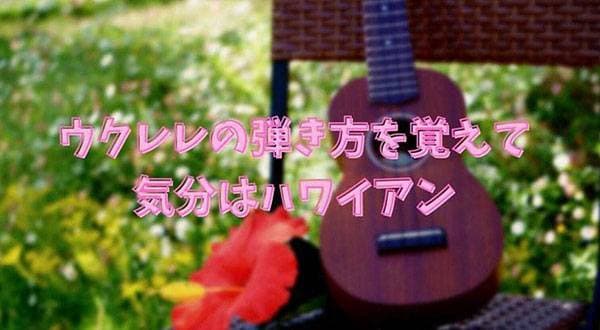
 サウンドハウス社員が選ぶ 『おもしろ商品』はコレだ!
サウンドハウス社員が選ぶ 『おもしろ商品』はコレだ!
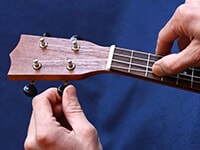 ウクレレのチューニング方法
ウクレレのチューニング方法
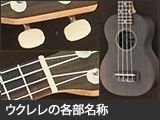 ウクレレの各部名称
ウクレレの各部名称
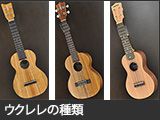 ウクレレの種類
ウクレレの種類
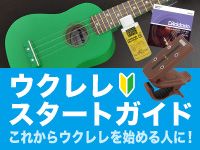 ウクレレスタートガイド
ウクレレスタートガイド
 ウクレレ初心者講座
ウクレレ初心者講座















